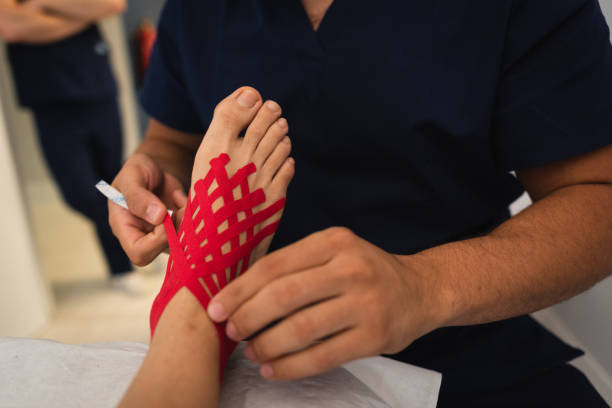Do You Know Your Flat Feet Causing Your Knee Pain?

You might not immediately associate foot discomfort with knee pain. Did you know that weak or poor foot function can cause discomfort higher up in the body, in joints like the hips, knees, and even the lower back? Flat feet are a common sign of foot weakness, which has a direct correlation to aching knees. The function of the knee joint is directly impacted by the farther toward extremes of very flat feet or very high arch feet. Because the human body functions as a single unit, it is crucial to consider both the functionality of each joint alone and collectively.
The excessive foot flattening or rotational alterations in the arch or heel that result in the knee rolling inward are the most frequent foot-related causes of knee pain. This may apply to one knee and foot or occasionally to both knees. Pronation is the medical term for this rotational movement, and you may have heard it at a shoe store or during a visit with your podiatrist.
How Do Your Feet Affect Your Knees?
Flat feet or high arches in the feet can lead to alignment issues in the lower body. The most frequent of them is a flatfoot ailment, which can lead to knee issues. Let’s examine what occurs to a person’s physique when they have flat feet.
The lower body is misaligned when the foot arch flattens on the ground due to a knock-off impact. The irregular inward twisting of the shin and thigh bones that results from the flattened foot arch puts additional strain on the knee joint and can occasionally be painful. With improper foot posture, knee issues like ACL or meniscus tears may get worse or take longer to repair.
In extreme circumstances, a person may have knock-knees, which cause the knees to touch or point in the same direction when the person is standing. On the other hand, someone who has high arches in their feet may have bowleggedness, where the knees stick out. In both situations, the knees are put under additional strain, which hurts.
What Does The Research Tell Us?
Did you know that research has linked elderly folks’ flat feet to knee discomfort and damaged cartilage? It is advisable to start using preventative therapies as soon as possible because people with flat feet are more likely to get knee pain. The best medicine for our health is definitely prevention!
A study conducted in 2011 included 1903 individuals, with a 65-year-old average age. Out of this group, 22% of knees were reported to be sore most days. According to the study, persons who have flat feet are more likely to experience knee pain and damage to the knee cartilage by 1.3 and 1.4 times, respectively. (2011) Gross, K. Douglas et al.
This shouldn’t come as a surprise because healthy knee joints and foot function are always intimately related.
However, we observe that foot shape and function contribute to knee discomfort in people of all ages. Many of the much younger patients with knee pain we meet in the clinic are quite physically active and participate in sports often. At this level, it’s common to need to treat muscular imbalances & weaknesses. Younger children’s flat feet frequently seem as more flexible flat feet.
It’s vital to consider things like footwear, activity adjustment, in-shoe arch supports or custom orthotics, and strength training for the feet, knees, and hips when it comes to the management of foot and knee pain in children. When it comes to children’s foot or leg pain, the optimum treatment is determined through a thorough evaluation.
What Should I Do If Flat Feet Causes Your Knee Pain?
As was already established, a flatfoot posture might contribute to or exacerbate knee pain. A thorough physical examination is required in both situations. The clinician can evaluate the bones and tissues using X-rays or MRI/CT scans. The physician can learn how flat feet can induce knee discomfort by analyzing foot posture and walking stride.
Treatment plans for knee discomfort frequently include:
- Exercises for stretching and building muscle
- Icing and pain management techniques for improving posture
